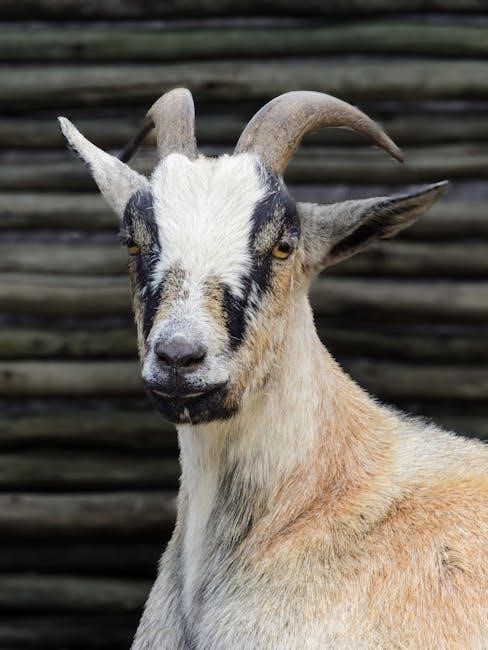and optimal temperature settings for successful breeding and nurturing of young dwm with proper care and management techniques always.
Overview of DWM Breeding
The process of dwm breeding involves several key factors, including a deep understanding of the species’ specific needs and requirements. Using information from experienced breeders, such as Mike Donkersgoed, can be incredibly valuable in setting up a successful breeding program. A crucial aspect of dwm breeding is creating a suitable environment, which includes providing a varied and nutritious diet, as well as maintaining optimal temperature and humidity levels. According to various sources, including the June 1999 REPTILES magazine article, dwm breeding requires a great deal of care and attention to detail. By following the guidelines and recommendations outlined in this guide, breeders can increase their chances of success and enjoy the rewarding experience of raising healthy and thriving dwm. With the right approach and techniques, dwm breeding can be a fun and educational hobby, allowing breeders to learn more about these fascinating creatures and their unique characteristics.
Importance of Proper Care
Proper care is essential for the health and well-being of dwm, and this is especially true for breeders who want to ensure the success of their breeding program. By providing a stress-free environment, breeders can help to reduce the risk of disease and illness in their dwm. A suitable enclosure with adequate space, temperature, and humidity levels is crucial for the health and development of dwm. According to experienced breeders, close monitoring of the dwm’s behavior and health is also vital, as it allows breeders to quickly identify any potential problems and take action to address them. By prioritizing proper care, breeders can help to create a healthy and thriving environment for their dwm, which is essential for successful breeding. With proper care, dwm can thrive and reach their full potential, making them a rewarding and enjoyable species to breed and care for. Proper care is the foundation of a successful dwm breeding program.

DWM Habitat and Environment
Dwm habitat and environment include custom enclosures with optimal temperature and humidity settings always.
Setting Up the Enclosure
Setting up the enclosure is a crucial step in dwm breeding, requiring attention to detail and a deep understanding of the species’ needs. The enclosure should be designed to mimic the dwm’s natural habitat, with a focus on creating a thermally stable environment. This can be achieved through the use of heat lamps, heat mats, and other heating elements, carefully controlled to maintain optimal temperatures. The enclosure should also be well-ventilated, with a secure lid to prevent escape and ensure the health and safety of the dwm; Additionally, the enclosure should be equipped with hiding places, climbing structures, and other features to provide mental and physical stimulation for the dwm. By carefully setting up the enclosure, breeders can create a comfortable and stress-free environment for their dwm, which is essential for successful breeding and nurturing. Proper setup is key to a healthy and thriving dwm population.
Water Features and Hygiene
Water features play a vital role in maintaining the health and hygiene of dwm, and should be carefully considered when setting up the enclosure. A large water bowl or pool should be provided, allowing the dwm to soak and swim freely. The water should be changed regularly to prevent the buildup of bacteria and other microorganisms, and a water filtration system may be necessary to maintain optimal water quality. Additionally, the enclosure should be designed to prevent water from accumulating in areas where the dwm may come into contact with it, reducing the risk of disease and infection. Proper hygiene practices, such as cleaning food and water dishes regularly, are also essential for maintaining a healthy environment. By prioritizing water features and hygiene, breeders can help prevent the spread of disease and create a clean and healthy environment for their dwm to thrive. Cleanliness is essential for dwm health and well-being.

DWM Diet and Nutrition
Dwm diet consists of varied food with optimal nutritional value using customized feeding techniques for proper growth and development always.
Food and Water Requirements
Providing the right food and water is crucial for the health and well-being of dwm, a balanced diet with optimal nutritional value is essential for proper growth and development. The dwm breeding guide recommends a varied diet that includes a mix of protein-rich foods and vegetables, using a customized feeding technique to ensure the dwm receive the necessary nutrients. A water bowl large enough for the dwm to soak in is recommended, with fresh water changed daily to prevent bacterial growth. The dwm breeding guide also suggests maintaining a humidity level of 60-80% to ensure the dwm stay hydrated and healthy. A shallow water dish can be used for drinking, and a larger water area for soaking, the dwm breeding guide provides detailed information on the food and water requirements for dwm at different stages of their life cycle, from hatchlings to adults, to ensure they receive the best possible care.
Nutritional Supplements
The dwm breeding guide emphasizes the importance of nutritional supplements in ensuring the optimal health and well-being of dwm, a balanced diet alone may not provide all the necessary nutrients. Additional supplements such as calcium and vitamin D3 can be added to the food to promote strong bone growth and development. A multivitamin supplement can also be used to fill any nutritional gaps, the dwm breeding guide provides recommendations on the best supplements to use and how to administer them. It is essential to follow the recommended dosage to avoid over-supplementation, which can be harmful to the dwm. The guide also discusses the importance of gut loading, which involves feeding the dwm’s food source a nutrient-rich diet before feeding it to the dwm, this helps to ensure that the dwm receive the necessary nutrients for optimal growth and development. Proper supplementation can help prevent health problems and ensure the dwm thrive.

Health and Disease Prevention
Regular monitoring and maintenance of proper hygiene using cleaning techniques helps prevent diseases in dwm breeding always with good management practices.
Monitoring Health
Monitoring the health of dwm is crucial for their well-being and survival, using various methods such as observation and testing to identify any potential health issues early on.
A regular checkup can help prevent diseases and ensure the dwm receive proper care and attention, including a balanced diet and clean living environment.
The internet provides a wealth of information on dwm health, including common diseases and their symptoms, as well as tips for maintaining optimal health and preventing illness.

By staying informed and taking a proactive approach to health monitoring, dwm breeders can help their animals thrive and live long, healthy lives.
This involves being aware of the signs of illness and taking action quickly to address any issues that arise, with the goal of providing the best possible care for the dwm.
Overall, monitoring health is an essential part of dwm breeding and care, and is critical for the success and well-being of these amazing animals;
Disease Prevention and Treatment
Disease prevention and treatment are critical components of dwm breeding, requiring a comprehensive approach to maintain the health and well-being of the animals.
This involves implementing measures to prevent the introduction and spread of diseases, such as quarantine procedures and hygiene protocols, using specialized equipment and cleaning products.
Treatment of diseases requires a thorough understanding of the symptoms and causes, as well as access to effective medications and therapies, which can be found through online research and consultation with veterinary experts.
A proactive approach to disease prevention and treatment can help minimize the risk of illness and ensure the long-term health and survival of the dwm, which is essential for a successful breeding program.
By staying informed about the latest developments in disease prevention and treatment, dwm breeders can provide the best possible care for their animals and help prevent the spread of diseases.
Regular health checks and a clean environment are essential for preventing diseases in dwm.
